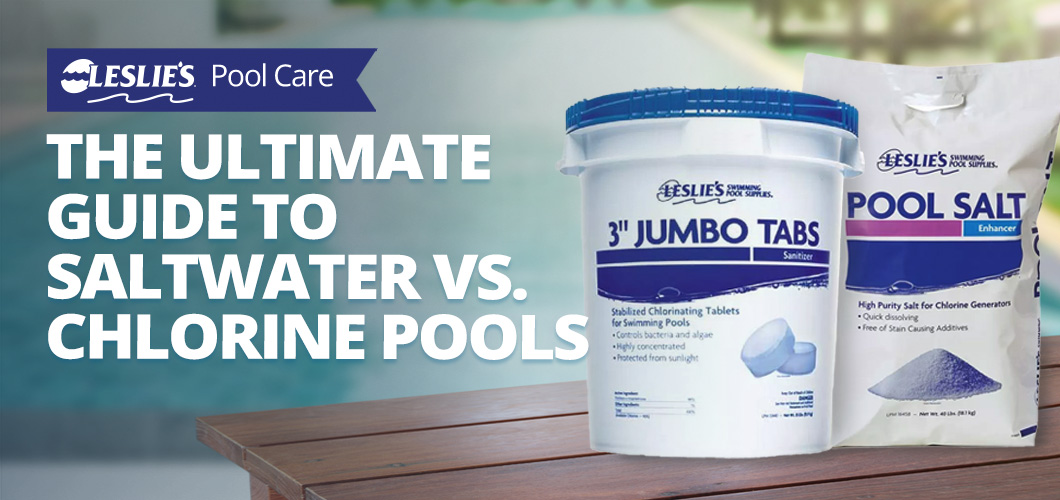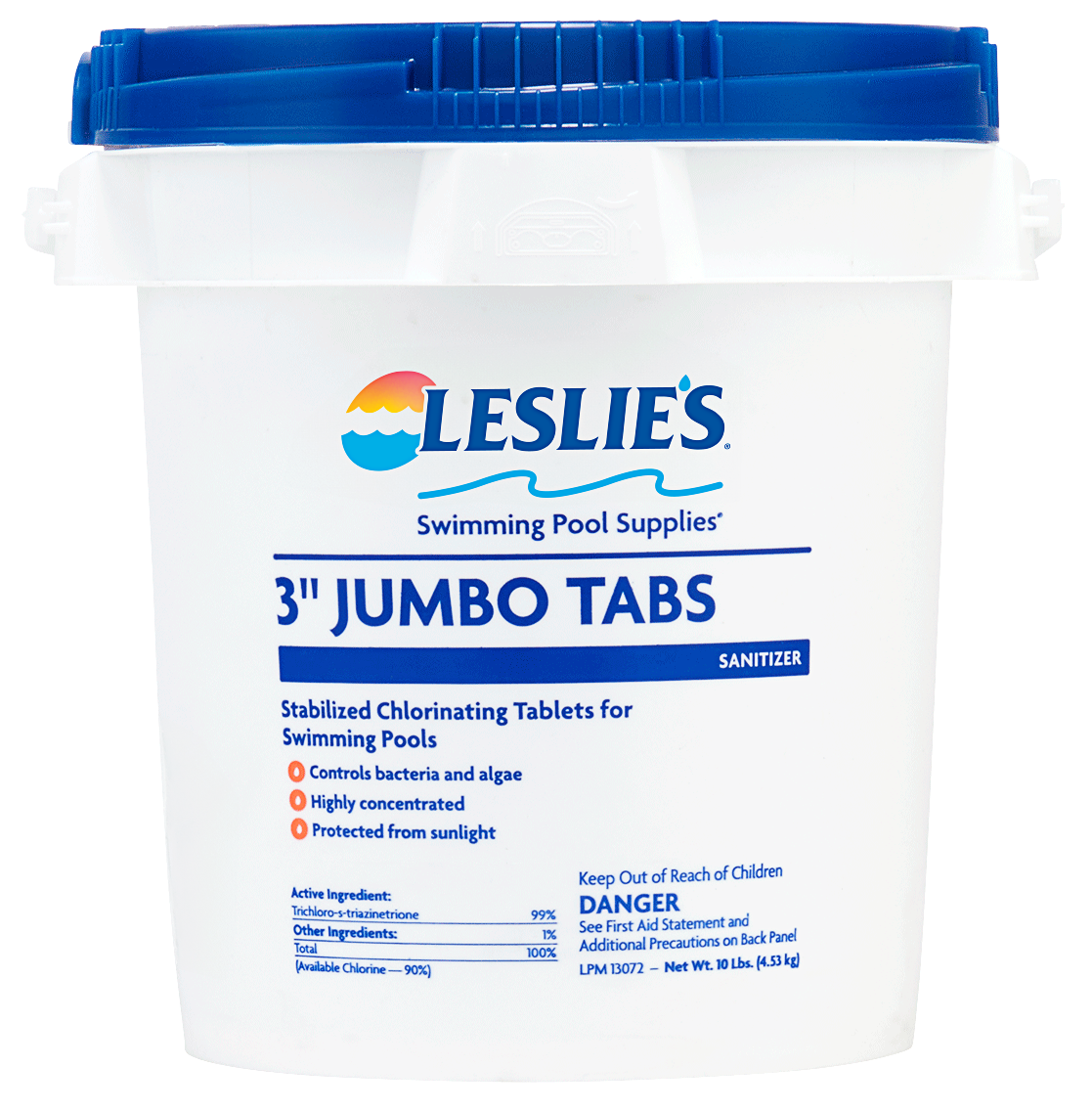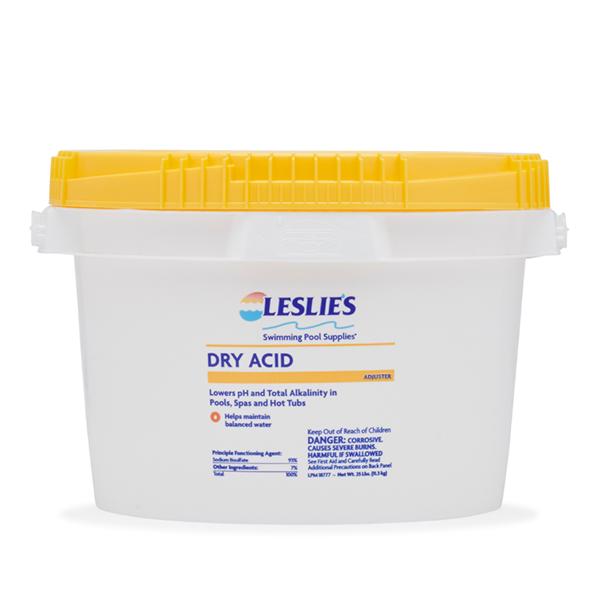
The Ultimate Guide to Saltwater vs. Chlorine Pools
Traditional chlorine pools have reigned supreme for decades as the most popular type of residential swimming pool. But, chlorine pools are not the only type of swimming pools out there. In recent years, saltwater pools have grown significantly in popularity thanks to their numerous benefits. From softer water to reduced maintenance, saltwater pools are proving to be a worthy rival. So, what makes these two types of pools so different, and is one better than the other? Let's dive into the saltwater vs. chlorine pool debate and discover what separates these two pools.
Saltwater Pools 101
First things first — contrary to popular belief, saltwater pools don't actually taste or feel salty! Saltwater pools typically have a salt concentration of 3,000–4,000 parts per million (ppm), while oceans tend to be around 35,000 ppm. And unlike abrasive ocean water, saltwater pools have soft, silky water that is particularly appealing to people with sensitive skin and eyes. The soft water creates a luxurious swimming experience and is one of the main advantages of a saltwater pool.
Additionally, saltwater pools are known for their ability to maintain a more stable pH and Total Alkalinity level, resulting in less frequent adjustments and a more comfortable swimming environment.
Perhaps the biggest misconception surrounding saltwater pools is that they don't use any chlorine. So, it may come as a shock to some to learn that saltwater pools do actually need and use chlorine to sanitize the water! But how saltwater pools obtain their chlorine is what separates them from traditional pools. That's where saltwater chlorine generators come into play.
How Does a Saltwater Chlorine Generator Work?
A saltwater chlorine generator, also called a salt system, is made up of two parts: the salt cell and control panel, which work together to transform salt into chlorine. The control panel manages the desired chlorine output and features a digital display that monitors the system's status.
The salt cell is where the magic happens. As the salty pool water passes through the salt cell, which is plumbed into the return line, it goes through a process called electrolysis. During electrolysis, electrically-charged plates inside the cell split the salt molecules, converting them to sodium hypochlorite molecules, which then transform into hypochlorous acid — better known as chlorine. Once the chlorine sanitizes your pool water, it actually turns back into salt and then travels through the salt cell again, producing a near endless supply of chlorine.
Now that you have a better understanding of how a saltwater pool works, let's discuss the ins and outs of traditional chlorine pools.
Chlorine Pools 101
For over 50 years, chlorine has been the number one form of pool water sanitization, and for good reason. Chlorine is a tried-and-true method for keeping pool water safe and sanitized. It quickly eliminates algae, bacteria, and other microorganisms that can thrive in pool water. This is particularly important for public or heavily-used pools, where the risk of contamination is higher. Additionally, chlorine is typically easy to acquire, relatively inexpensive, and available in three forms — tablet, granular, and liquid.
Chlorine Tablets

Tablets are the most commonly-used form of chlorine, thanks to their convenience and efficiency. Their size and slow-dissolving nature make them ideal for floating and automatic chlorinators. This provides pool owners with an easy, "set it and forget it", sanitization method. Additionally, tablets contain up to 90% chlorine, which is significantly higher than liquid or granular.
Another benefit of tablets is that most are stabilized, meaning they contain Cyanuric Acid. Similar to the sunscreen we use to protect our skin from the sun, Cyanuric Acid protects the chlorine molecules from being evaporated by the sun's UV rays. This feature enables chlorine to last longer in your pool water and increases its effectiveness.
Granular & Liquid Chlorine
While tablets are king when it comes to daily chlorination, granular chlorine is the top pick when you need to quickly add a large dose of chlorine to your pool, also known as shocking! Sodium dichlor and calcium hypochlorite are the two most common types of granular pool shock. Calcium hypochlorite, also called cal-hypo, contains high levels of chlorine and is the most powerful form of shock.
The final type of chlorine is liquid sodium hypochlorite chlorine. One perk of liquid chlorine is its significantly cheaper purchase price compared to the more expensive tablets. However, the lower cost comes at a price, as liquid chlorine has a much shorter shelf life and requires more maintenance to sustain an adequate level in your pool than tablets or granular chlorine.
Saltwater vs. Chlorine Pools
Now that we've covered the basics, let's take a detailed look at what separates a saltwater pool from a traditional chlorine pool.
Cost
There are two price points to consider when determining the overall cost of each pool — the upfront cost and the ongoing maintenance cost. When it comes to the initial investment, chlorine pools are significantly less pricey than their salty counterparts, because they require less equipment. However, the monthly expenses of a chlorine pool can add up quickly. A bucket of chlorine tablets costs between $80–$270 depending on the size, with each tablet lasting up to one week per 10,000 gallons of water.
Saltwater pools need a salt system and pool salt to get up and running. On average, salt systems cost between $900–$1,900, and pool salt is roughly $12 per 40 pound bag. The amount of salt you need depends on your pool's volume in gallons and the salt system manufacturer's recommendation. While saltwater pools cost more upfront, their minimal monthly costs make them less expensive than chlorine pools in the long run.
Maintenance & Repairs

For saltwater pools, it's important to regularly monitor the pool's salt content and adjust as necessary. Additionally, because salt systems produce sodium hypochlorite, which is high in pH, it's crucial to routinely test the pH level. If the level is above the recommended range of 7.4–7.6, add Dry Acid to the water to help lower it. And remember, high levels of salt can corrode the metal components of your pool, like ladders and light fixtures. Using sacrificial anodes is the best way to protect the metal in your pool from salt damage.
Chlorine pools require regular monitoring of chlorine levels and pH levels. Pools need chlorine tablets, liquid, or granules to maintain the optimal chlorine concentration. It is also important to regularly shock the pool to eliminate any bacteria or algae buildup.
Regardless of the type of pool, regular cleaning and maintenance tasks are necessary to keep the water clean and clear. Both saltwater and chlorine pools need regular brushing, skimming, and vacuuming to prevent algae growth and the buildup of other contaminants.
Water Chemistry
When it comes to water chemistry balance, saltwater and chlorine pools should be managed in a similar manner. For optimal swimmer safety and pool water health, test the water weekly and ensure the chemicals are within the following ranges:
- Chlorine: 2.0–4.0 ppm
- pH: 7.4–7.6. It's common for saltwater pools to have a slightly elevated pH due to the high concentration of salt, so use a pH reducer like Dry Acid to maintain a proper pH level.
- Total Alkalinity: 80–120 ppm
- Calcium Hardness: 200–400 ppm
- Cyanuric Acid: 30–50 ppm. Because saltwater pools don't use stabilized chlorine tablets, it's particularly important to ensure there's an adequate Cyanuric Acid level.
- Salinity: While this range depends on your salt system manufacturer's recommendation, the typical range is 2,500–3,500 ppm.
Water Quality
Both saltwater and chlorine pools can provide a safe and enjoyable swimming experience when properly maintained. The softer water and decreased amount of chlorine in saltwater pools is ideal for individuals with sensitive skin or allergies. Additionally, saltwater pools are at a much lower risk of developing chloramines, which can cause serious eye, skin, and respiratory problems.
In chlorine pools, maintaining the proper chlorine levels is crucial for effective disinfection. However, excessive chlorine levels can cause skin and eye irritation, especially if not properly balanced. It is essential to regularly test the water and adjust the chlorine levels accordingly to ensure a safe swimming environment.
Which Pool is Best?
When deciding between a saltwater and chlorine pool, there are several factors to consider:
- Budget: Consider your initial budget and long-term maintenance costs. Saltwater pools cost more upfront, but require much less monthly maintenance. While chlorine pools are less expensive initially, but come with a higher month-to-month price tag.
- Skin sensitivity: If you or your family members have sensitive skin or allergies, a saltwater pool may be more suitable.
- Maintenance preferences: Both types of pools require specific care and maintenance. While saltwater pools tend to be more self-sufficient, they sometimes need costly repairs or replacements. While chlorine pools also need regular attention, they tend to be a bit more predictable and straightforward.
- Personal preference: Ultimately, the decision should align with your personal preferences and what you value most in a swimming pool.
If you prioritize a luxurious swimming experience with soft, silky water, and minimal chemical usage, a saltwater pool may be the right choice for you. However, be prepared for a higher initial cost and periodic maintenance of the saltwater generator. On the other hand, if affordability and effective water sanitization are your main concerns, a chlorine pool may be the best fit. Just keep in mind the regular maintenance required to monitor chlorine levels and pH balance. But no matter which pool you prefer, your local Leslie's is here to help you keep it in top shape!